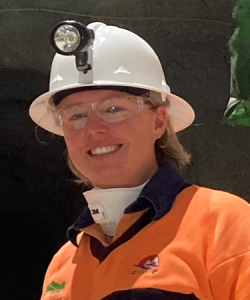Keynote Speakers
Hotel Bonaventure, Montreal, Canada
24–26 September 2024
Keynote speakers

Professor John Hadjigeorgiou
Pierre Lassonde Chair in Mining Engineering
University of Toronto, Canada
John Hadjigeorgiou currently holds the Pierre Lassonde Chair in Mining Engineering at the University of Toronto. Previously, he served as head of the Department of Mining, Metallurgical and Materials Engineering at Université Laval in Quebec City. Dr Hadjigeorgiou has degrees in civil engineering, geological sciences and mining engineering. He is a graduate of the Rotman School of Management at the University of Toronto and the Institute of Corporate Directors, and holds the ICD.D designation.
Professor Hadjigeorgiou has published more than 125 peer reviewed technical articles, co-authored two books on ground support and has been co-editor of numerous conference proceedings on deep and high stress mining. He is the recipient of multiple awards and is a Fellow of the Canadian Institute of Mining and Metallurgy.
Dr Hadjigeorgiou possesses over 35 years of worldwide applied research and consulting experience in the areas of geotechnical and mining engineering, and currently participates in several geotechnical review boards.
Click to read keynote abstract
Ground support is an integral part of the design process in deep and high stress mines. Maintaining the integrity of underground excavations under extreme ground conditions has been the driving force for significant innovations in ground support technology. In addition, access to powerful analytical and numerical tools and monitoring technology have illustrated opportunities for significant improvement in the design process.
This paper employs field observations, performance data from controlled laboratory experiments, and forensic investigations to challenge the common assumptions used in the design and implementation of ground support systems in deep and high stress mines.

Sarah Webster
Principal Caving Specialist
Evolution Mining, Australia
Sarah is a geomechanical engineer with 25 years’ experience spent at open pit, stoping and caving operations. Sarah has led the life of mine studies team at Northparkes to evaluate and deliver the future caving projects for Northparkes. Sarah has a master’s degree in mining geomechanics from the Western Australian School of Mines and is studying a PhD at the Australian National University.
Click to read keynote abstract
The mining industry is moving towards methods that have less surface impact, lower cost, and are deeper as surface ore sources are exhausted. Block caving is a solution; however, it comes with significant considerations, particularly at depth. Operations must be prepared to commit 3+ years ahead of ore delivery, the substantial capital funds and have a mining strategy that can withstand inherent risks of cave establishment and reserve delivery. For a green field mining site, the parameters required to produce a bankable feasibility study, without applicable empirical data, can be difficult to defend. Brownfield caving sites have the benefit of learning from their past cave performance. Leveraging existing infrastructure such as hoists, ventilation shafts, declines, and crushers for the next cave makes subsequent capital investments less substantial and risky. However, planning such infrastructure for 30+ years requires attention to detail and careful engineering.
Northparkes has been cave mining for 27 years, completing three block caves with cave extensions to all of them. Sticking to caving rules, the cave heights don’t exceed 500 m, where the effects of stress start to be seen. The second lift caves take them to depths of 800 to 1,000 m and third lifts are at 1,000+ m depth, at high stress conditions. At Northparkes, the geomechanical intricacies of structure, material properties and stress play a significant role in successful or underwhelming caveability outcomes. The determination of appropriate caving spans from primary caves to extensions is challenging and weighs up contributions from rock mass, geometry, draw control, cave treatment and propagation simulation efforts. Examples from E26 Lift 2, E26 Lift 2 North, and E26 SLC are provided where challenges were cave forecasting and reserve recovery, capital investment on infrastructure and distances from caves to major excavations.
Northparkes has all current reserves less than 500 m depth, however, when considering futures caves in resource category, more than 60% of the material is located beneath 500 m depth. These caves include E26 Lift three, E48 lift 2 and GRP lift 2. Undoubtedly, learnings from past Northparkes caves will be used for future designs. With the extensive considerations required to design and manage multiple lifts and draw columns >800 m, learnings and new techniques gleaned from other caving sites are equally important. This paper outlines learnings, opportunities and future considerations Northparkes Mines has for its deeper caves and discusses some of the key risks of deep caving.

Pranay Yadav
Senior Ground Control Engineer
Glencore, Canada
Pranay is a mining engineer with over 10 years of rock mechanics experience in various underground and surface mining operations in India and Canada. He obtained his BTech from the Indian School of Mines in 2013 and MSc from Laurentian University in 2018. Currently, he is working at the Nickel Rim South Mine as the senior ground control engineer. Pranay’s rock mechanics experience includes deep and high-stress mining, late-stage extraction, squeezing ground conditions, seismic and rockburst risk management, mine design and planning, and drill and blast design.
Click to read keynote abstract
Glencore’s Nickel Rim South Mine, located in the Sudbury Basin, has been operating at intermediate depths (1,105–1,720 m below surface) since 2009. The mine is ramping down production activities and will transition to care and maintenance in July 2024. The mine delivered an unprecedented production ramp-up and has consistently achieved or exceeded the planned life of mine production target of 1.2 million tonnes per annum. The mine’s achievements are a testament to the mining culture, operational excellence, engineering design, and ground control program.
The mine was initially designed with a primary ground support system comprising fibre-reinforced shotcrete and rebar, which was unique to the Sudbury Basin. The assumption in 2009 was that the shotcrete and rebar support would be sufficient to withstand the potential mining-induced stresses and the associated deformations. However, as mining progressed, it became evident very early in the mining sequence that the original support design basis underestimated the dynamic loading and rockburst risk, which resulted in a fundamental shift in the mine’s approach toward dynamic ground support design. Over the life of the mine, a series of upgrades to the ground support systems were made, including ‘prehabbing’ several kilometres of excavations. The ground support performance is presented with select case studies, highlighting key considerations and limitations of current dynamic ground support design methods.
At the time of Nickel Rim South Mine’s inception, there was limited experience of bulk open stope mining in footwall (copper) style deposits within the Sudbury Basin. This was correctly recognised during the initial mine design, resulting in a conservative extraction strategy to manage dilution and associated stope instabilities. As additional data was collected and more experience was gained at the Nickel Rim South Mine, the rock mass behaviour of the relatively weak copper veins contrasting with the highly competent host rock became more evident. The underground observations, seismic data analysis, and numerical modelling enabled the mine to adapt to the improved understanding of the rock mass behaviour and implement significant strategic changes to the mine design regarding stope sequencing, extraction methods, sublevel spacing, and pillar designs. Key strategic changes are presented, with discussions on the geomechanical back analyses and the realised operational flexibility.
This paper presents key strategic and tactical controls utilised to manage seismic hazards and rockburst risks at Nickel Rim South Mine and compares the final implementation to the initial geomechanical assessment of these controls. Generally, there is a significant gap in the knowledge of rock mass behaviour in the infancy of a mine, which is often bridged with assumptions and empirical rules. An important consideration is that most empirical rules and guidelines are based on shallow mines and may not necessarily translate to mines at greater depths. It also promotes discussions on what this might mean for future deep mining operations as well as emphasises the necessity of a robust and effective ground control program that not only considers and manages operational geomechanical risks but also systematically validates and challenges the underlying assumptions based on measured and observed rock mass behaviours to inform and support mine design.
